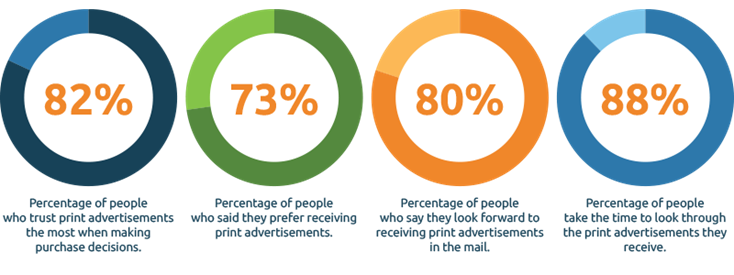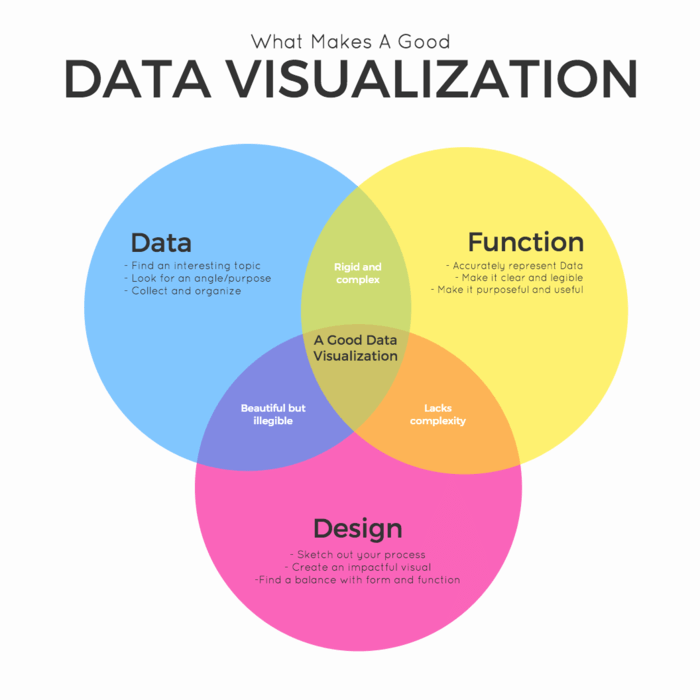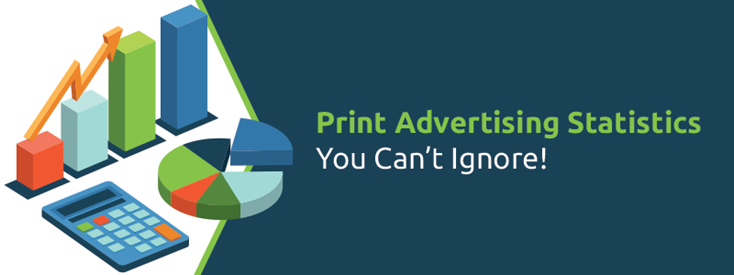The Revival of Print Advertising: Redefining Marketing with Visual Statistics
The article explores the revival of print advertising through the integration of visual statistics, demonstrating how this combination can redefine marketing strategies in the modern digital age. Visual statistics, including infographics, charts, and graphs, are celebrated for their ability to make complex data accessible and memorable in a world inundated with information. They leverage the innate cognitive advantage of the human brain's preference for processing visual information, allowing for deeper audience engagement.

In the ever-evolving world of marketing and advertising, the convergence of traditional print advertising and the captivating power of visual statistics has opened a gateway to a new era of engagement and conversion.
While digital marketing continues to reshape the industry, print advertising, when thoughtfully combined with the allure of visual statistics, proves that it is far from outdated.
In this comprehensive exploration, we delve deep into the realms of visual statistics and print advertising statistics, unveiling how their collaboration can revolutionize your marketing strategy.

Visual Statistics: Unleashing the Potential
Visual statistics are the unsung heroes of modern advertising. In an era where information inundated audiences, visuals provide a compelling way to make complex data accessible and memorable.
Visual statistics encompass a diverse array of visual content, from infographics, charts, and graphs, to stunning images, all designed to transform data into an engaging, understandable narrative.
The Power of Visual Statistics
In the fast-paced and ever-evolving world of modern marketing, the overwhelming flood of information has become the new norm.
In such an environment, where consumers are bombarded with data from all directions, the power of visual statistics emerges as a beacon of hope, offering a compelling and engaging medium for conveying complex data.
Visual statistics, in their diverse forms, encompass infographics, charts, graphs, images, and other graphical elements meticulously designed to transform data into accessible and engaging narratives.
In the following discourse, we will delve into the profound impact and immense potential of visual statistics in modern marketing.
In an age where information overload is the daily challenge, visual statistics serve as a refreshing departure from the mundane. They represent the uncharted territory of modern marketing, offering a novel and innovative way to communicate data-driven insights.
Visual statistics are more than just eye-catching images; they are powerful tools that breathe life into complex data, making it not only accessible but also memorable for the audience.
The essence of visual statistics lies in their ability to distill complex information into easily digestible forms. This transformation takes many shapes, but perhaps none are as universally appreciated as infographics.
These information-packed graphics are designed to be visually appealing and highly informative, providing a clear and concise representation of data. For instance, a well-crafted infographic can illustrate intricate market trends or demographic statistics in a way that a spreadsheet or a text-heavy report cannot.

Decoding Visual Statistics
In this section, we begin our journey into visual statistics by demystifying the concept. We explore the various forms of visual content that fall under this umbrella, understand why visuals are a dominant force in modern marketing, and appreciate the power of visual storytelling in conveying intricate data.
Visual statistics, at its core, encompass a rich variety of visual content that transcends traditional data presentation methods. From infographics to charts, graphs, images, and a myriad of graphical elements, visual statistics offer marketers a versatile toolkit for communicating their message.
These visual aids are meticulously designed to take raw data and weave it into compelling stories, making even the most intricate information accessible to a broader audience.
At the heart of our exploration is the profound question: Why have visuals become a dominant force in modern marketing? The answer lies in the way the human brain is wired.
Our brains are naturally inclined to process visual information more efficiently and retain it longer than plain text or numerical data. Visual statistics tap into this cognitive advantage by presenting complex data in a format that aligns with our brain's natural processing capabilities.
As a result, the audience not only comprehends but also remembers and engages with the content on a deeper level.
Visual statistics are more than just an attractive facade; they are potent tools for storytelling. In the age of information overload, marketers are constantly challenged to stand out and create content that resonates.
Visual storytelling, made possible through visual statistics, transforms data into narratives that captivate and educate simultaneously. These narratives have the power to convey a message with clarity and impact, making it easier for the audience to understand and connect with the information presented.
The Enduring Value of Print Advertising
We embark on a historical journey to understand the enduring value of print advertising. We examine its evolving role in the contemporary marketing landscape and learn how it continues to engage audiences despite the digital onslaught.
Print advertising has a timeless quality that sets it apart from its digital counterparts. The very act of holding a print ad in your hands, flipping through its pages, or seeing it in a magazine or newspaper creates a tactile connection with the audience.
This physical interaction adds a layer of engagement that digital ads often lack. When combined with the visual appeal of visual statistics, the tactile power of print advertising becomes even more compelling.

The Tactile Power of Print Advertising
The tactile nature of print advertising holds a unique appeal. This section uncovers the power of tangibility, offering insights into how the physicality of print ads can create lasting impressions and evoke emotional connections with the audience.
Print advertising statistics indicate that readers tend to spend more time with print materials compared to digital content. This extended engagement offers a valuable opportunity to convey your message in a more leisurely and immersive manner.
When you integrate visual statistics into your print ads, you enhance this experience, capturing your audience's attention and delivering complex data in a format that's both visually engaging and easy to understand.
Harnessing Print Advertising Statistics
Print advertising statistics take center stage in this section. We explore key metrics, such as circulation figures, ad placement, and reader demographics, and understand their significance in assessing campaign effectiveness. Real-world examples showcase how print advertising statistics drive data-informed decisions.
To make print advertising a strategic component of your marketing efforts, it's essential to harness print advertising statistics. These metrics provide insights that guide your decisions and help you optimize your campaigns for maximum impact.
Circulation figures are a fundamental print advertising statistic. They reveal the reach of a publication and give you an idea of how many potential readers your ad can reach.
High circulation figures suggest broader exposure, but it's also crucial to consider the quality of the audience. Visual statistics in your print ads can help you tailor your message to the publication's readership, ensuring that you capture the right audience's attention.
Understanding reader demographics is vital for targeting the right audience. Print advertising statistics can reveal the characteristics of the publication's readers, helping you tailor your message to their interests and preferences. Visual statistics can further enhance the appeal of your ad to the specific demographics you want to reach.

The Enduring Strength of Print Advertising
At first glance, print advertising may appear antiquated in a world dominated by digital channels. However, dismissing the potential of print ads would be a mistake.
The tactile, tangible nature of print advertisements, when combined with the artistry of visual statistics, can create lasting impressions that digital media often struggles to replicate.
To ensure that print advertising retains its place in your marketing arsenal, it's crucial to integrate it with visual statistics. Print advertising statistics become your guiding light in this endeavor, offering valuable insights into the performance of your print campaigns.
Metrics such as circulation figures, ad placement, and reader demographics empower you to gauge the effectiveness of your print advertising. These statistics enable you to refine and optimize your strategies to achieve the best possible outcomes.
Harmonizing Visuals and Print Advertising

Infographics: The Art of Data Storytelling
Infographics serve as powerful data storytellers. They transform intricate statistics into a compelling narrative that captures the reader's attention while making the data easily digestible.
For instance, when introducing a new product, an infographic can vividly depict a 50% increase in sales, replete with eye-catching visuals, leaving a profound impact.
Visual Charts and Graphs: Communicating with Clarity
Incorporating visual charts and graphs in your print ads lends immediate credibility and clarity to your message. These visuals help consumers visualize trends, compare data points, and understand complex statistics at a glance.
They excel at communicating data-driven benefits or making product comparisons.
Aesthetic Imagery: Evoking Emotion
High-quality images, in concert with visual statistics, can tell a captivating story. For instance, when promoting a luxury travel destination, pairing statistics with captivating images can transport readers to their dream vacation.
This synergy evokes powerful emotions and drives deeper engagement.
Navigating with Visual Statistics
The beauty of infusing visual statistics into your print advertising lies in the ability to make data-driven decisions that resonate with your audience.
Here's how to harness this symbiosis effectively:
A/B Testing for Optimization
Experiment with different visuals and layouts in your print ads and carefully analyze their impact.
Metrics such as response rates, brand recognition, and customer engagement offer valuable insights to determine which combinations work best.
Tracking Tools: The North Star of Data
Implement tracking tools to monitor the impact of your print advertising endeavors. Use custom URLs, QR codes, or unique phone numbers to attribute leads and conversions to specific print ads.
This granular data provides direction, pointing to the most engaging and converting ad campaigns.
Iterative Approach for Long-Term Success
Continuously analyze print advertising statistics to refine your strategies.
Over time, these statistics offer insights into what resonates most with your target audience, allowing you to create increasingly effective campaigns.
Conclusion
Visual statistics and print advertising statistics together form the bedrock of a successful print advertising strategy. When interwoven, they have the potential to redefine your print advertising campaigns as compelling, highly effective marketing tools.
By breathing life into data with captivating visuals and diligently monitoring your print advertising statistics, you can ensure that print advertising remains not only a valuable but a pivotal cornerstone of your marketing strategy.
When leveraged with precision, print advertising stands as a timeless instrument capable of capturing the attention of your audience and driving results that matter. The renaissance of print advertising is here, and it's a visual statistics-infused marketing revolution.
Embrace it, and watch your campaigns soar to new heights.